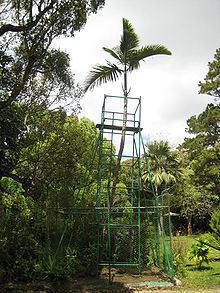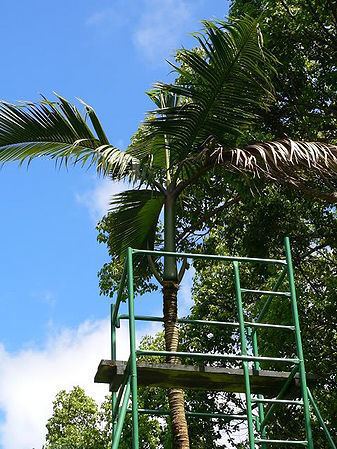Genus Hyophorbe Rank Species | ||
 | ||
Similar Hyophorbe indica, Hyophorbe, Hyophorbe verschaffeltii, Hyophorbe lagenicaulis, Ceroxyloideae | ||
Hyophorbe amaricaulis (also known as Loneliest palm) is a species of palm tree of the order Arecales, family Arecaceae, subfamily Arecoideae, tribe Hyophorbeae. It is found exclusively on the island of Mauritius, and only a single surviving specimen has been documented in the Curepipe Botanic Gardens in Curepipe. Thus, this the most gravely threatened species there is, in any kingdom.
Contents

Distribution

This species is one of nine species of palm which are indigenous to Mauritius, and one of the seven palms which are also endemic.

In the 1700s, this palm species was described from specimens taken from the mountain Pieter Both, where it seems to have been widespread at the time.

Currently, only the single specimen exists in Curepipe Botanic Gardens, and it is not known if this specimen was planted here, or was a survivor from the area's wild population that became included when the gardens were established.
Description
The palm is about 12 meters high with a relatively thin gray trunk with a waxy crown shank.

It is related to the bottle palm and spindle palm. It is said to resemble the green variety of H. indica.

It is reported to have white to cream-colored flowers, but years and years of efforts have not resulted in fertile offspring.
